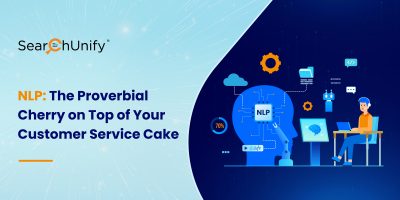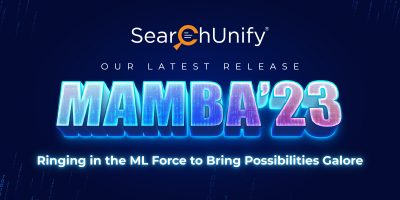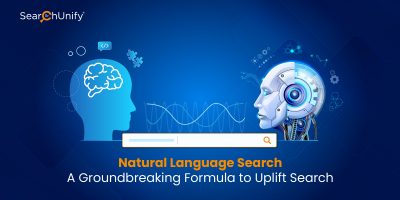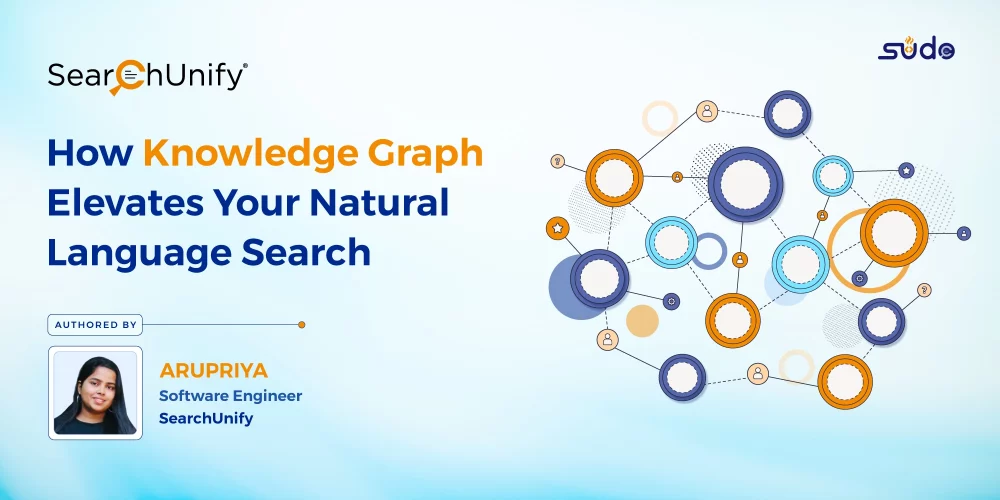
Imagine yourself as a first-time traveler in Japan, having just installed “CityGuide,” an app designed to assist tourists in crafting the perfect yet unique travel itinerary. However, you quickly realize that the app only presents generic suggestions, showcasing random public attractions. Won’t this be a situation of a natural language search veering off course?
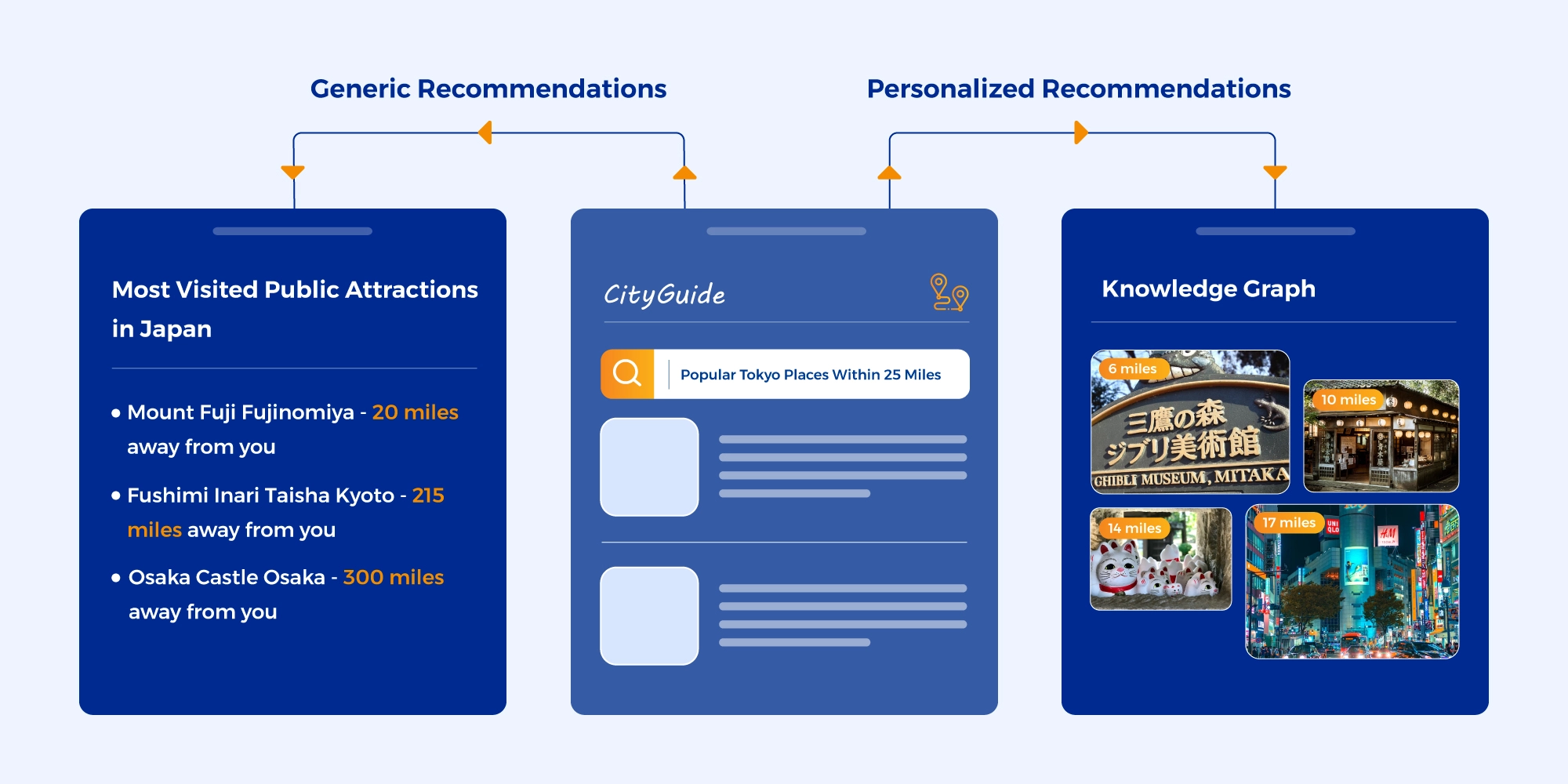
This is where knowledge graphs make a difference. If the app had knowledge graphs in place, it would be adept at furnishing you with recommendations aligned to your specific preferences, weaving together a blend of distinctive locales.
The upshot? Travelers like yourself would get super helpful and personalized suggestions, making your trip even more exciting. Yet, you might wonder, how exactly do these knowledge graphs work their magic? This blog post explains!
But First Things First—What is a Knowledge Graph?
A knowledge graph is a structured representation of information that captures the relationships between various entities or concepts as a network of interconnected nodes (entities) and edges (relationships).
For instance, a knowledge graph about movies might have nodes representing actors, with edges indicating which movies they starred in. This interconnected structure allows for sophisticated searches like “Show me movies directed by Steven Spielberg starring Tom Hanks.”
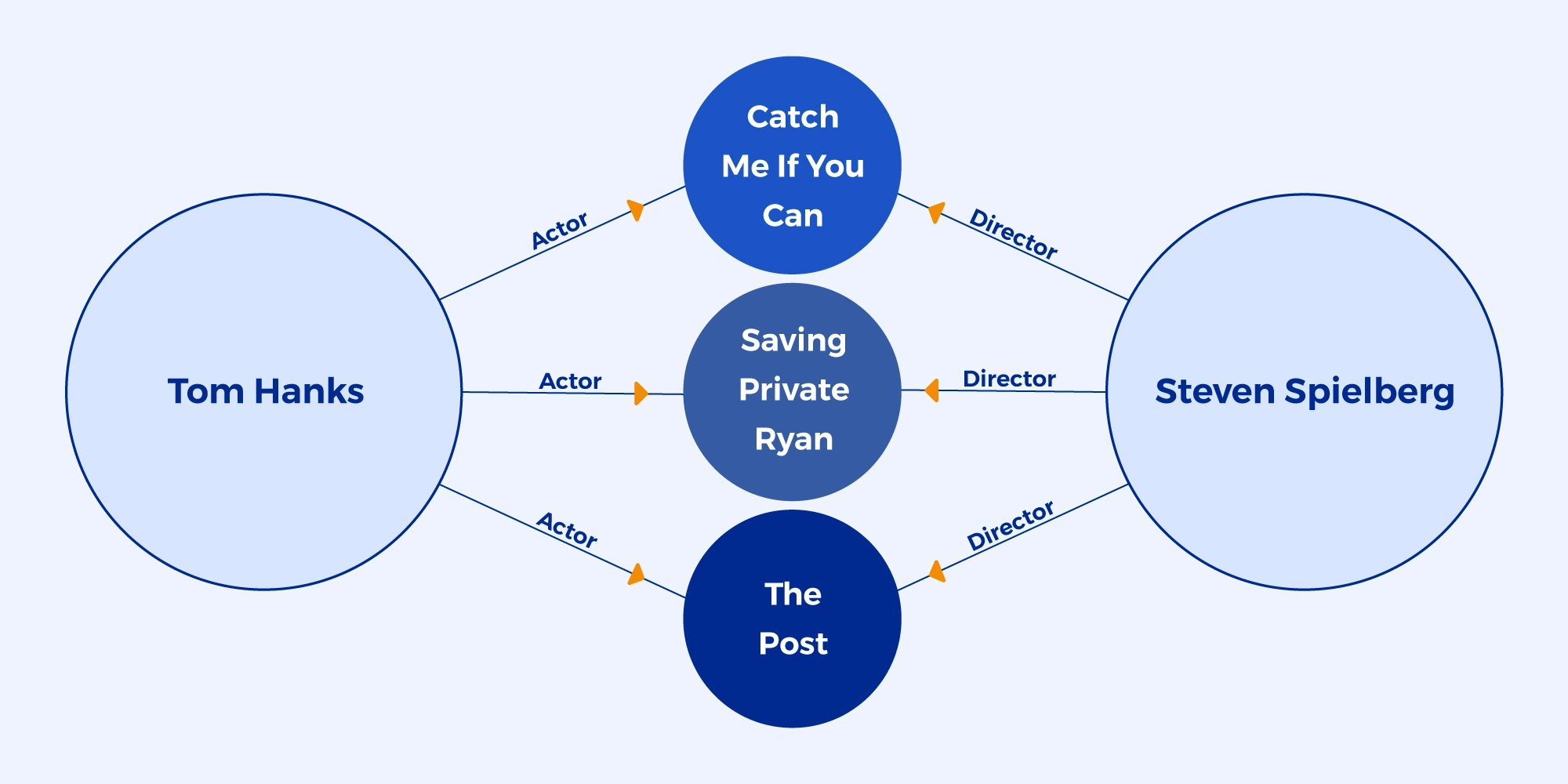
If we refer to the above diagram, the nodes “actor” and “director” are connected to one another through the edges, “movies,” based on their relationships.
But how exactly does it emphasize the capabilities of an NLS tool? Let’s find out!
The Importance of Knowledge Graphs in Natural Language Search
NLS systems rely on a variety of techniques to help them bridge the gap between human language and computer interactions, and knowledge graphs are essential to enhancing their capabilities in the following ways:
- Semantic Understanding: Natural Language Search systems strive to go beyond simple keyword matching and comprehend the underlying semantics of user queries. A knowledge graph helps the system to grasp the true intent behind the user’s words. Say, a customer is contacting your support team for the second time in an hour with a tone of urgency, they’d be able to pick up on this and help accordingly.
- Disambiguation: Natural language is inherently ambiguous, and certain words or phrases can have multiple meanings depending on the context. A knowledge graph provides a contextual framework that aids in disambiguating these terms, enabling the Natural Language Search system to choose the most appropriate interpretation.
- Contextual Inference: A well-constructed knowledge graph captures the relationships between different entities and concepts. This contextual understanding allows natural language search systems to make inferences and draw conclusions based on the available knowledge, enhancing the accuracy of responses. As a result, it also elevates self-service capabilities through contextually-correct responses.
- Personalization: Knowledge graphs enable NLS systems to delve deeper into user preferences, behavior, and interests. By storing relevant user data and mapping it to the knowledge graph, the system can provide personalized and tailored responses that cater to individual needs based on their individual personas.
- Expanded Search Capabilities: By considering the relationships and connections between entities, the system can present more comprehensive and relevant results to users. Therefore, amplifying the overall self-service and search experience.
- Query Expansion: Natural language search systems can utilize the knowledge graph to expand and enrich user queries. By identifying related concepts and entities, the system can refine the original query and present more diverse and nuanced results.
- Continuous Learning: Knowledge graphs are dynamic structures that evolve and incorporate new data over time. This continuous learning process benefits natural language search systems, allowing them to stay up-to-date with the latest information and improving their performance as new knowledge is assimilated. They can also learn from the user’s journey past interactions to modify responses accordingly.
Are you as impressed by these capabilities as I am? Perhaps you would like to see them in action! Allow me to present the best search solution for all your support needs!
How SearchUnify Leverages Knowledge Graphs for Delivering Hyper-Personalized Recommendations
SearchUnify is a powerful cognitive search platform that helps businesses elevate their support and self-service capabilities. It stands out for its approach to personalization through knowledge graphs.
By leveraging knowledge graphs in user journey analysis, SearchUnify creates a Nodes graph that maps user interactions with article titles. Additionally, a Weights graph measures the number of clicks from one article to another, revealing valuable insights into user interests and engagement patterns.
The result is a seamless and tailored user experience, where relevant content is delivered at the right time, ultimately enhancing customer satisfaction and engagement.
Through its clever use of knowledge graphs, SearchUnify continues to set a new standard in the realm of personalized recommendations. You can request a demo to witness its powerful performance firsthand!


